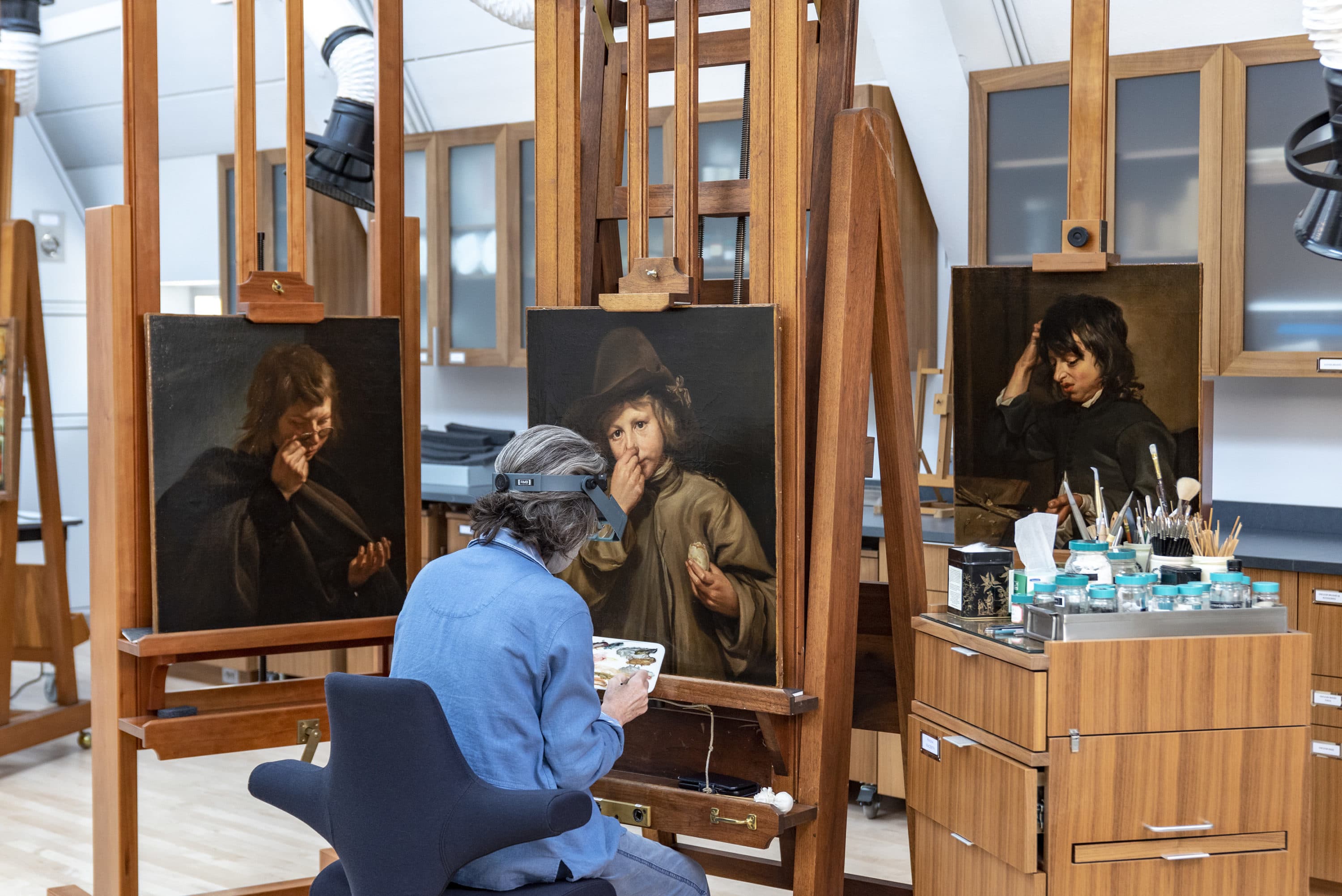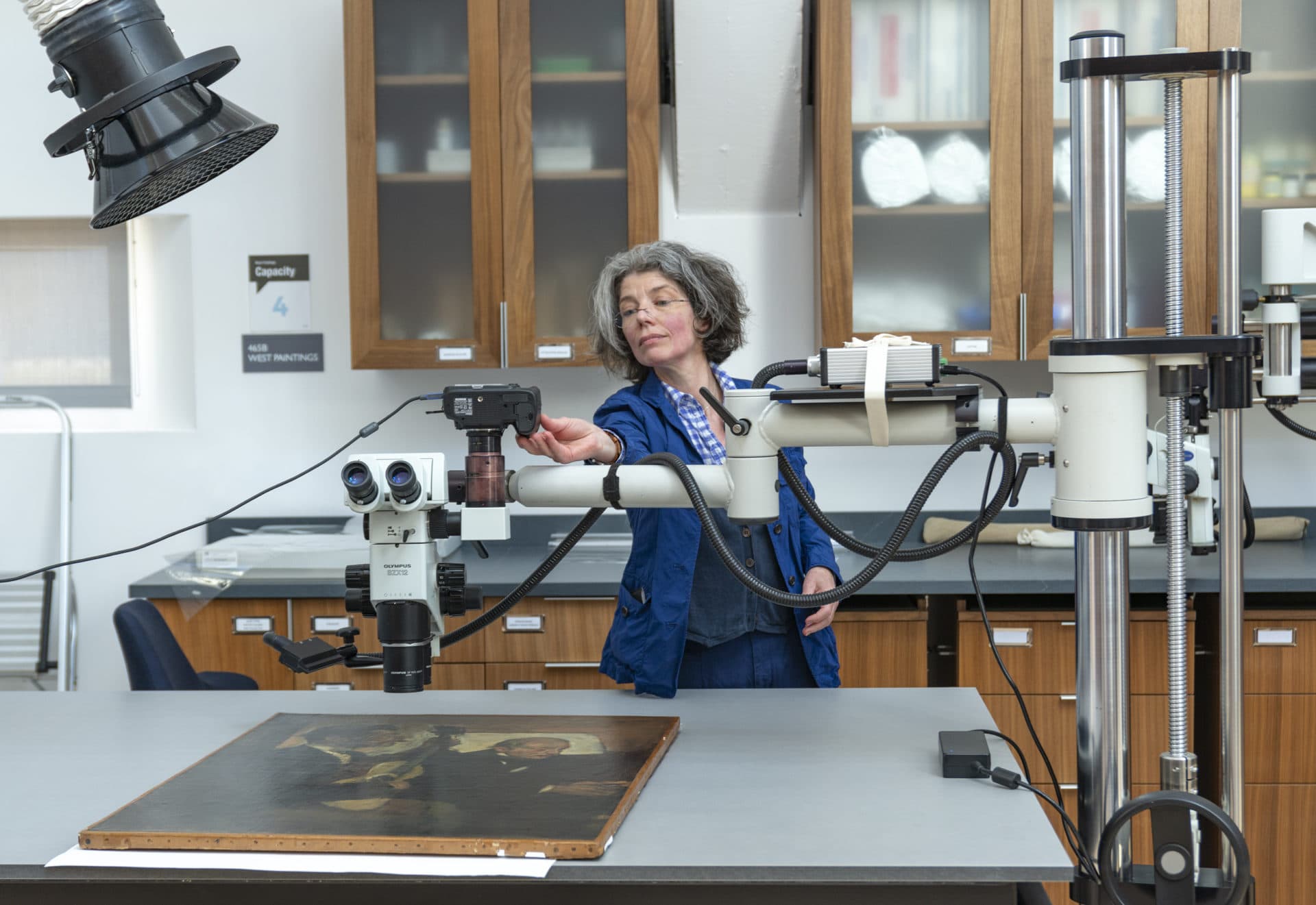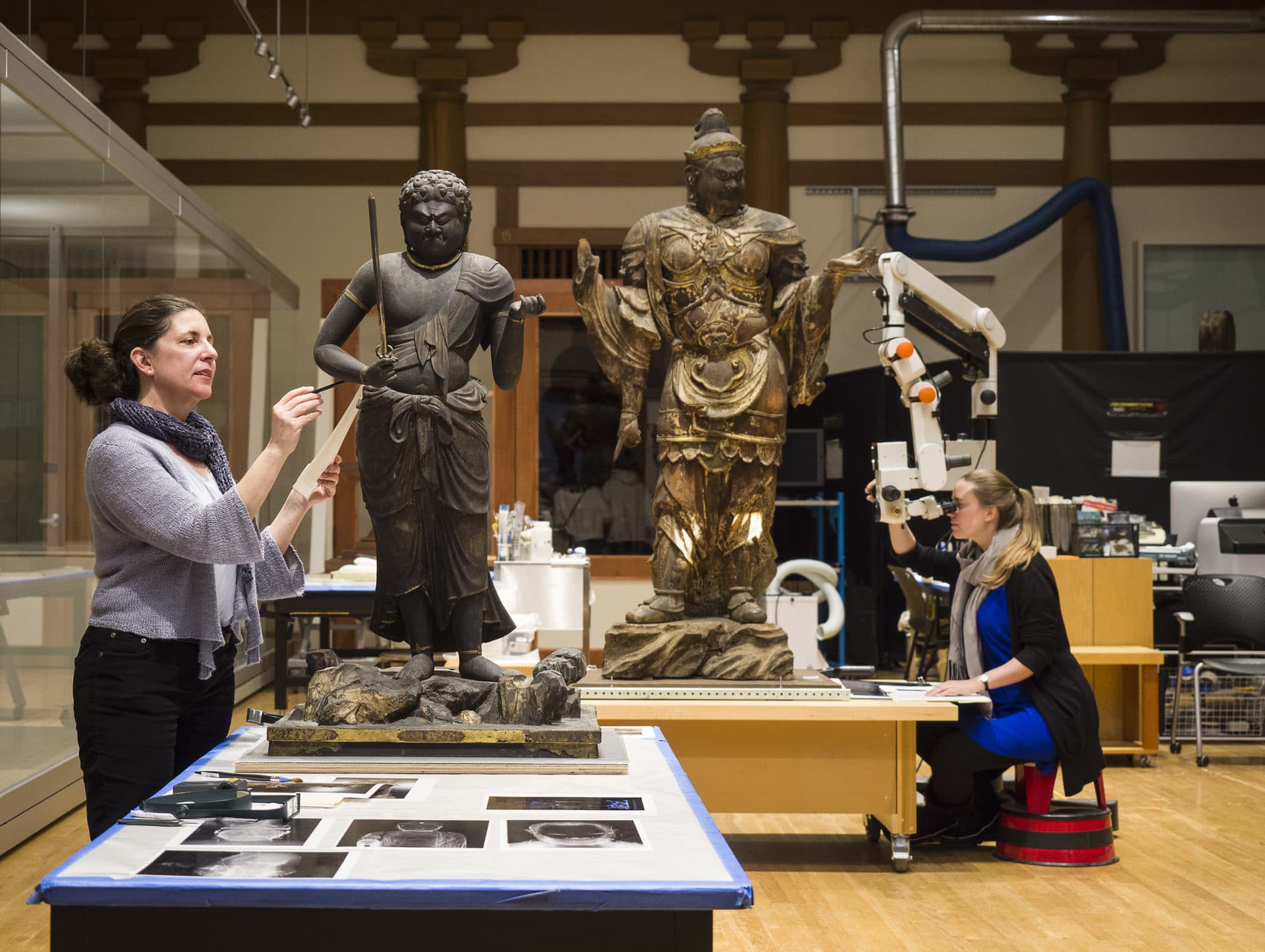Advertisement
MFA's new Conservation Center gives visitors a behind the scenes look at museum work

The work of preserving and restoring old masterpieces is laborious, scientific and often done behind closed doors. The Museum of Fine Arts, Boston wanted to change that. With the opening of their new Conservation Center, visitors will have the opportunity to learn more about the conservation process and the specifics of what sets art movements apart from one another.
“It seemed that people were very interested in getting the opportunity to see what conservators do and to talk to the conservation staff,” said Rhona MacBeth, the director of conservation and scientific research. For over two decades, teams at the MFA thought about how to incorporate conservation work into the public’s museum interactions. Engagements with the public, especially through their “Conservation in Action” program, helped guide the building plans.

The newly constructed center is 22,000 square feet and includes six laboratories for paintings, frames, furniture and other objects. There is space for workshops and mount making, which will be available for the general public, and for training and tutorials.
The Pamela and Peter Voss Conservation Seminar Room, a learning area, was built into the Conservation Center and is fully accessible to all visitors at the museum. The MFA hopes this will bring the public closer to the inner workings of the museum. “The number of people who've said to me, ‘If only I had known that this profession even existed,’” said MacBeth. The museum hopes that this initiative will play a role in ushering in a new generation of museum workers.
Beyond fostering visitors' relationships with the institution and inspiring future museum workers, the MFA wants people to have the intimate experience of looking at artwork with a conservator. Learning details about how a piece is made, why it was made, and the context within its making can change the way viewers look at and understand art, and art history, in general. Part of a conservator's job is to look at the clues within an object to learn about the aims of an artist, and the MFA wants to share that process with its visitors. The hope is that people will walk away looking at the artwork installed in the galleries a little bit differently, with newfound connection and insight.

To celebrate the Conservation Center’s opening this week, the MFA is offering a wide range of talks and tutorials covering the basics of conservation. Among a host of workshops on Friday, Nov. 11, visitors can learn about the yearslong effort to prepare and conserve the 1485 Bartolomeo Vivarini altarpiece, “Virgin and the Dead Christ with the Ascension and Saints,” from conservator Lydia Vagts. And on Saturday, Richard Newman, the museum’s head of scientific research, will lead a talk on the importance of science in art museums.
More tours will be planned in the following months. But from this point on, visitors are invited to stop by the Robert and Carol Henderson Conservation Learning Center to see conservators and staff at work in the Furniture and Frame Conservation Laboratory and mount-making studio. “One of the things that the museum is really committed to is opening up the museum to a whole new audience who, hopefully, will see themselves as part of this institution,” said MacBeth.
